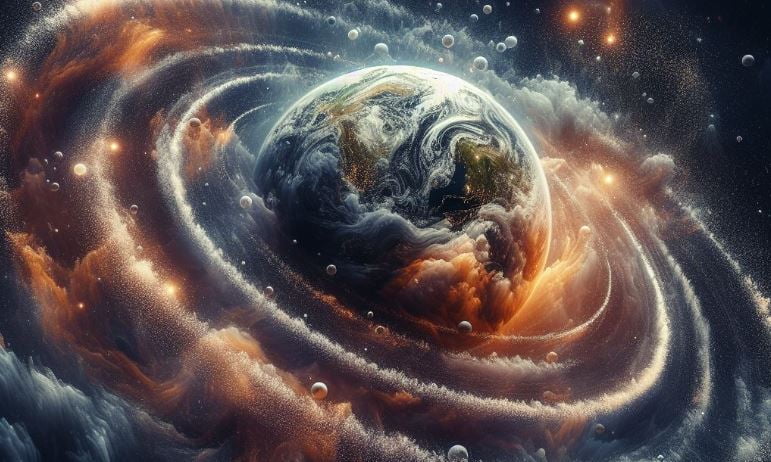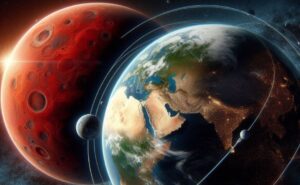Have you ever gazed up at the night sky and marveled at the beauty of Saturn’s majestic rings? What if Earth had Rings? Imagine the spectacle, the wonder, and the scientific implications! Let’s see into this hypothetical scenario and explore what it would mean if Earth had rings.
What Would Earth’s Rings Look Like?
Picture this: a luminous arc stretching across the sky, shimmering with the hues of twilight. Earth’s rings would likely be composed of dust, rocks, and ice particles, much like Saturn’s rings but on a smaller scale. They would orbit our planet, encircling it like a cosmic halo, casting enchanting shadows during sunrise and sunset.
The Science Behind the Spectacle
Earth’s rings would be a testament to the dynamics of our solar system. The formation of such rings would likely involve collisions between asteroids or the fragmentation of a passing comet, similar to the processes thought to have shaped Saturn’s rings. Over time, gravitational forces would shape these particles into a thin, disk-like structure around our planet.
Effects on Astronomy and Stargazing if Earth Had Rings
For astronomers and stargazers alike, Earth’s rings would offer a fascinating subject of study. Imagine the research opportunities, and the chance to unravel the mysteries of planetary formation and evolution right in our cosmic backyard. Telescopes around the world would turn their lenses towards Earth, capturing breathtaking images of this celestial spectacle.
Impact on Climate and Tides if Earth Had Rings
The presence of rings could have profound effects on Earth’s climate and tides. The additional debris in orbit around our planet would scatter sunlight, potentially leading to changes in temperature and weather patterns. Furthermore, the gravitational interactions between the rings and Earth could subtly alter ocean tides, creating new patterns along coastlines worldwide.
Cultural Significance and Inspiration
Beyond the realm of science, Earth’s rings would captivate the human imagination and inspire countless works of art, literature, and mythology. They would become a symbol of our interconnectedness with the cosmos, sparking conversations about our place in the universe and the wonders that lie beyond our atmosphere.
Challenges and Opportunities
Of course, with great beauty comes great challenges. Earth’s rings could pose risks to satellites and spacecraft, requiring careful navigation to avoid collisions. However, they could also present opportunities for space exploration and resource extraction, opening up new frontiers for humanity’s expansion into the cosmos.
While the idea of Earth having rings remains a fascinating thought experiment for now, it reminds us of the boundless possibilities of the universe and the endless wonders awaiting discovery. So, the next time you gaze up at the night sky, take a moment to ponder the what-ifs and imagine a world where our own planet wears a celestial crown of rings. Who knows? Perhaps one day, this dream could become a reality.
Could you picture Earth adorned with rings, or do you think it’s best left to the realm of science fiction? Share your thoughts and join the conversation! And if you enjoyed this article, don’t hesitate to share it with your friends and fellow stargazers. After all, the wonders of the cosmos are meant to be shared.






